Scattered across the Pindus mountain range in northwestern Greece, a cluster of 46 picturesque stone villages, collectively known as Zagorochoria, defies the relentless march of centuries. People have been living here for millennia. Even if modern times sneaked into this time capsule, Zagori villages stand strong, like a well-kept museum, silent witnesses of the region’s rich past.
Zagorochoria is wrapped in dense forests, impressive ravines, and cold mountain streams
Today, Zagorochoria villages are a testament to the architectural ingenuity of the local inhabitants who constructed them using the stone that’s characteristic of the region. Traditionally growing around the central square, marked by a plane tree, these villages spread out with cobblestone streets, houses with slate roofs, and arched bridges.
The beauty of Greek Zagori spills outside of the settlements too, wrapping them in dense forests, impressive ravines, and cold mountain streams. This unspoiled landscape, recently protected as UNESCO‘s World Heritage Site, invites travelers to step back in time and savor the distinctive beauty of a bygone era.
But what are the best places to go in Zagorochoria? When’s the prime time to visit this timeless wonderland? Which village is the best to stay in Zagoria? And where to find Zagori’s best hotels? The answers await in this guide to Zagorochoria villages that deserve a pin on your travel map!
When exploring continental Greece, don't forget to visit Delphi, the Greek center that is also the center of the world!
Zagorochoria villages – division
The cluster of Zagorochoria is divided into three groups of villages: Western Zagori (west of Tymfi), Central Zagori (between Tymfi and Mitsikeli), and somewhat less popular – Eastern or Vlach Zagori (between Mitsikeli and Pindus).
15 best Zagori villages
Western Zagori villages
Megalo Papigo & Mikro Papigo
Papigo (sometimes written as Papigko or Papingo) is the most popular area in Western Zagori. Consisting of two neighboring villages – Megalo Papigo and Mikro Papigo, both located inside the Vikos–Aoös National Park, it is a favorite starting point for hikes in Vikos Gorge, the largest Greek canyon, and toward Drakolimni – Zagori’s dragon lake.
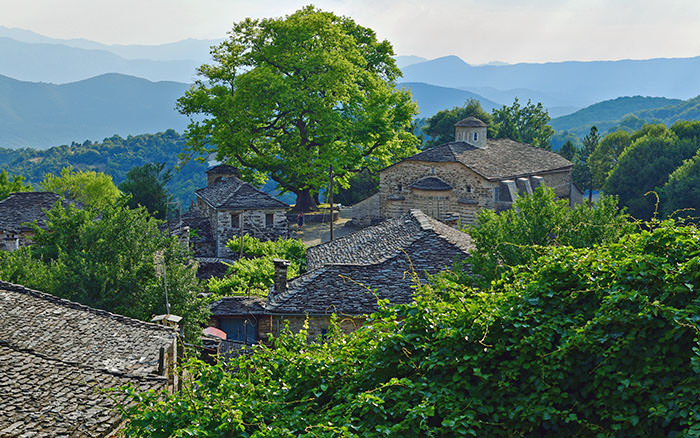
Among Papigo attractions, there is also a Provatina Cave nearby, which was, at the time of its discovery, the deepest cave well in Europe.
Local feasts
20 July – Prophet Elias (Megalo Papigo)
8 September – Birth of the Virgin Mary (Mikro Papigo)
Recommended places to stay
$$ – Saxonis Houses & Saxonis Villa
$$$ – 5korfes papingo
Monodendri
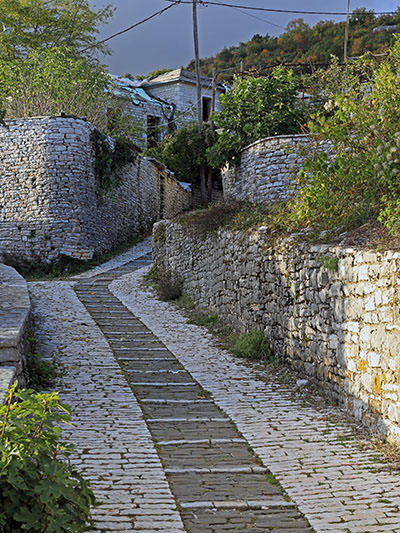
Situated at the entrance of the Vikos Gorge, the “Grand Canyon of Greece”, the traditional village of Monodendri is another perfect hiking base in Zagori. The trail from here will lead you to a stone forest and a 600-year-old Monastery of Agia Paraskevi, built on the gorge’s edge.
Stay in Monodendri, and you might discover the secret art of traditional weaving or stumble upon the stone amphitheater.
Local feast
26 July – Agia Paraskevi
Recommended places to stay
$ – Arktouros Hotel
$$$ – Abi Luxury Villas
Kato Pedina & Ano Pedina
There’s only a 20-meter difference in altitude between the two villages built atop a plateau of the Mitsikeli mountains, but enough to gain just slightly distinctive names: Kato Pedina (lower plains) and Ano Pedina (upper plains). First mentioned in the 14th century, back then known under the name Soudena (derived from the Slavic word for cold), they are among the oldest Zagori villages.
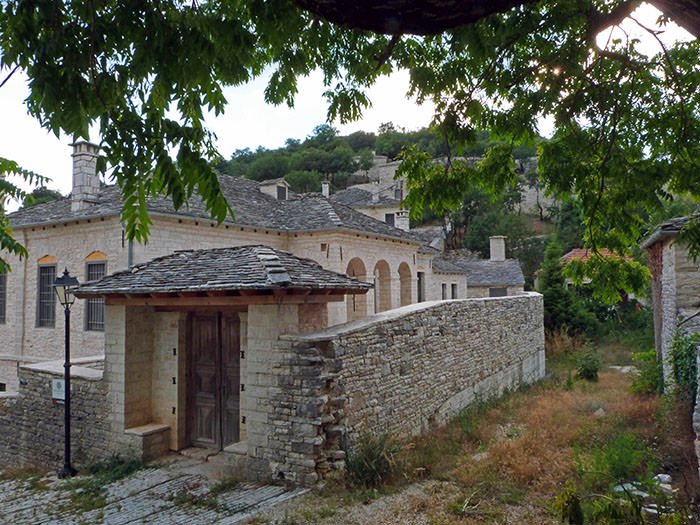
Kato Pedina is known for the discovered graves from the 2nd millennium BC, and the threshing stones for wheat from the fertile valley, that made it the granary of Zagorochoria.
Meanwhile, Ano Pedina, surrounded by lush nature, is famous for eminent scholars born in the village, and two monasteries.
Local feasts
29 August – Feast of Saint John the Baptist (Kato Pedina)
24 August – Agios Kosmas Aitolos (Ano Pedina)
Recommended places to stay
$ – Ameliko Zagori
$$ – Pirrion Wellness Boutique Hotel
$$$ – Apeiros Chora
Elafotopos
Still in Kentriko Zagori, in the vicinity of Pedina villages, perched high on the slopes of Stouros, Elafotopos (former Tservari) is among the most beautiful villages in Zagori. Its name translates as “the place of deer”.
The village was built by elaborate planning, around an impressive sycamore tree from 1200. The resistant trunk managed to recover from a lightning strike in 1898.
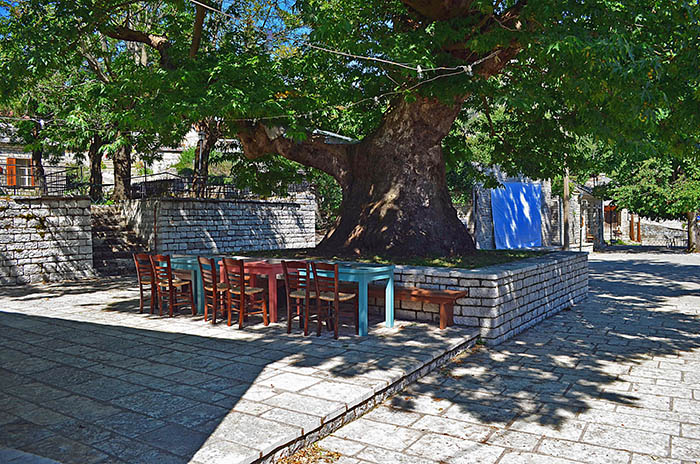
The Elafotopos Folklore and History Museum is worth visiting for its exhibition on the traditional professions of the area.
Local feast
Changing date between May 10 and June 13 (50 days after Orthodox Easter) – Feast of the Holy Spirit
Recommended places to stay
$$$ – Arkhontiko Kaisare
(Note: Accommodation options in Elafotopos are limited. For budget and mid-range alternatives, consider staying in Ano Pedina or Kato Pedina nearby, as mentioned earlier.)
Vikos
Standing at the edge of the gorge it took its name from, Vikos is a small but popular Zagori village. Besides hiking trails, its best assets are killer views.
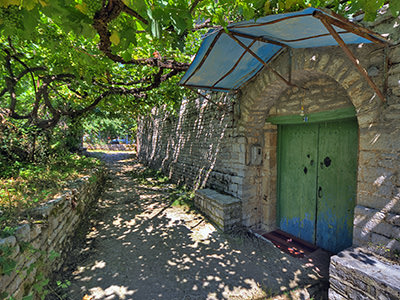
Hike downhill from the village into the gorge, and a little detour will bring you to Panagia Chapel and Angastromeni Springs of Voidomatis River, where you can take a refreshing bath.
Local feast
15 August – Dormition of the Virgin Mary
Recommended places to stay
$$ – Vikos View
$$$ – For a luxurious alternative, consider staying in Aristi nearby – Aristi Mountain Resort.
Central Zagori villages
Kipoi
Kipoi (or Kipi), at the southern end of Vikos Gorge, is the most popular village in Central Zagori.
Despite being named after its many gardens, Kipoi is better known for its collection of preserved stone bridges, some dating back to the 18th century. The three-arched Plakidas Bridge is a prime example of the region’s architectural prowess.
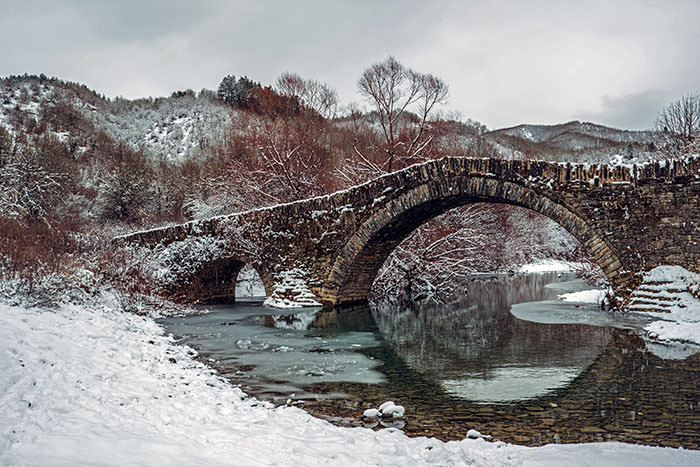
Sport climbers, paragliders, and other extreme sports enthusiasts like to stay in this village, while those who love tradition will want to visit the Agapios Tolis Folklore Museum, with one of the richest collections in Greece.
Local feast
6 August – Transfiguration of the Saviour
Recommended places to stay
$ – Melinas Boutique Hotel B&B
$$ – Kipi Suites
$$$ – Clio’s Stone House
Kapesovo
Once upon a time, they lived near Kipoi, but in the 16th century, the residents packed their bags and founded Kapesovo, their own stone village overseeing the ravine of Mezaria.
Known as the village of artists who built and decorated many churches in Zagori, they’re very proud of their stone church of Agios Nikolaos and its frescoes.
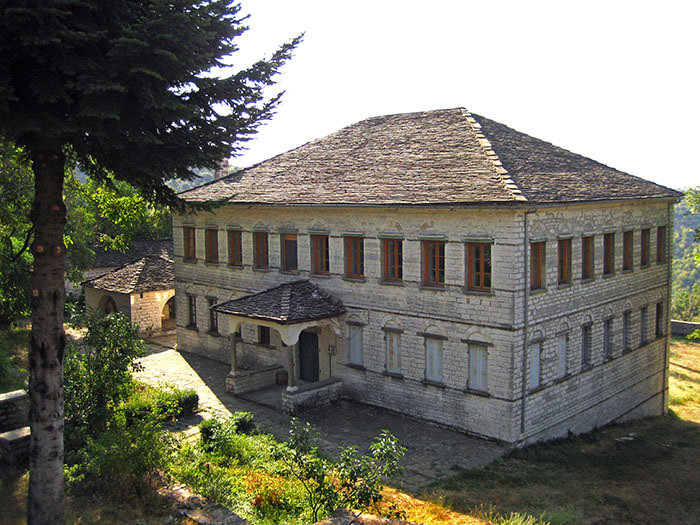
Families here celebrate their Greekness by naming children ancient names, like Plato.
For hikers, the area offers scenic pathways, like the trail to Kato Gradista through the holy forest with protected centuries-old trees, or the stone road to Vradeto.
Local feast
20 July – Prophet Elias
Recommended places to stay
$ – Mousafir Ontas
$$ – Archontiko Tzoufi
$$$ – Terpsichori Guesthouse
Vradeto
Sitting beneath the clouds of Mount Tymfi, at an altitude of 1,340 meters, Vradeto is the highest stone village of Zagori, sometimes called the balcony of Zagorochoria.
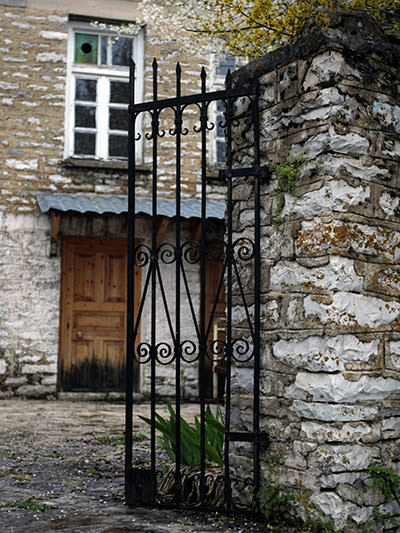
Founded in 1616, the village is best known for the winding Skala Vradetou or Vradeto Steps, heading out of the village in a southeast direction. To the northwest of Vradeto, a hike to Beloi viewpoint awaits, where one can enjoy the best panorama of Vikos Gorge.
Speleology lovers will adore the caves of Vradeto, among the deepest in Europe.
Local feast
8 September – Birth of the Virgin
Recommended places to stay
$ – Balkoni Zagoriou
$$ – Vradeto Guesthouse
$$$ – For a luxurious alternative, consider staying in Kapesovo.
Tsepelovo
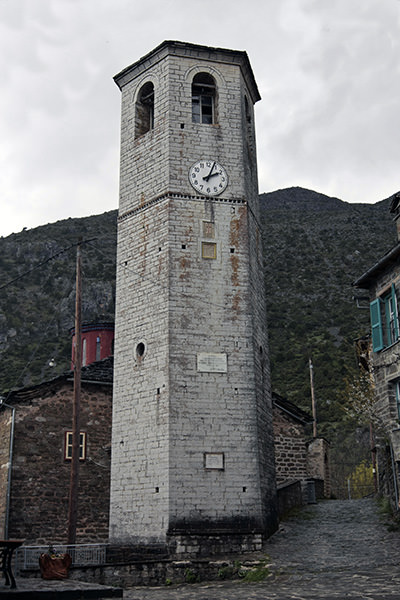
Located in the very core of Vikos–Aoös National Park, Tsepelovo is the center of Zagori and its largest village. Even if it only has 261 permanent residents, the village attracts a lot of tourists, especially in wintertime.
There are many trekking options, and the Vikaki Gorge trail, with the stone monastery of Agios Ioannis Rogovou, should be included in your itinerary.
Local feast
15 August – Dormition of the Virgin Mary
Recommended places to stay
$ – Villa Paroraia
$$ – Hotel Petrotechno
$$$ – Timfea Chalet
Dilofo
Dilofo is a preserved stone village on the slopes of Tymfi. Built in an amphitheatrical form between the two hills that gave it its modern name, it was once called Sopotseli, a place with a lot of water.
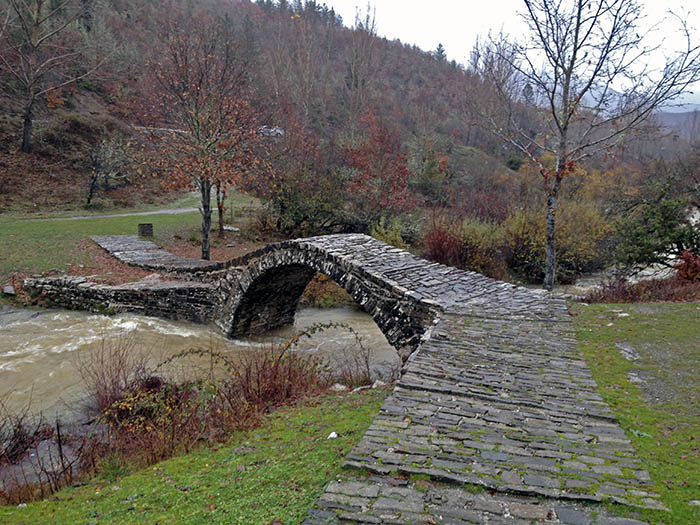
Today, Dilofo is known for its many stone fountains with drinking water, a central square marked by a four-century-old plane tree, and cobbled paths leading to imposing stone mansions. The Makropoulos mansion takes the crown; with its 13.5 meters, it is the tallest building of Zagorochoria.
Local feast
15 August – Dormition of the Virgin Mary
Recommended places to stay
$$ – Gaia Guesthouse
$$$ – Dilofo Hotel Luxury Suites
Aspraggeli
Last mentioned in Central Zagori’s lineup, Aspraggeli (or Asprangeloi) is actually the first Zagori village you encounter when arriving from Ioannina. Named after the local monastery (meaning “white angels”), it is the seat of the municipality.
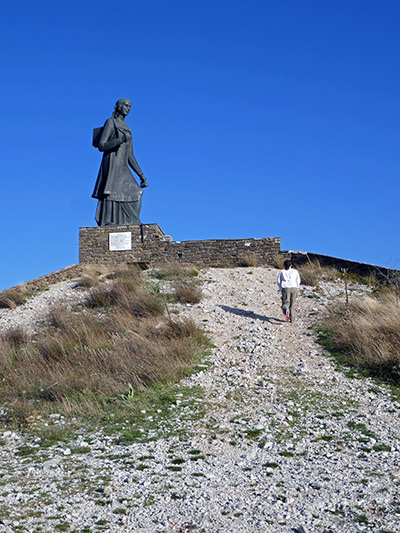
The nearby monument representing the woman of Zagori celebrates those who sacrificed their lives to repel the Italian invasion in 1940. As horses were used by the army, the women of Pindus carried supplies for Greek soldiers in the mountains on their backs. In 1943, Aspraggeli was burned by the Nazis.
Local feast
15 August – Dormition of the Virgin Mary
Recommended places to stay
$ – Arxontiko Krana
$$ – Meliteion Traditional Hotel
$$$ – Aiolides Traditional Homes
Eastern Zagori villages
Tristeno
In a network of running streams, far away from typical tourist routes, Tristeno is a green secret.
While the 1943 German bombings made the residents replace the traditional stone roofs with red tin ones, the village still radiates charm.
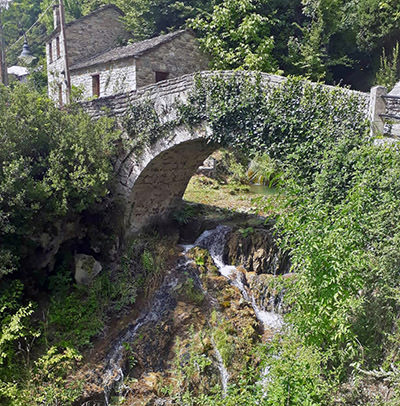
The main attraction, next to a small stone bridge, is a stone watermill from 1835, one of the last still operating in Greece.
Local feast
15 August – Dormition of the Virgin Mary
Recommended places to stay
There’s no known accommodation available in Tristeno. Stay in one of the other villages and visit it on a day trip.
Vovousa
In the eastern part of the Pindus National Park, Vovousa is a true hidden gem that emerged into the Greek spotlight only during the 2013 anti-dam protests.
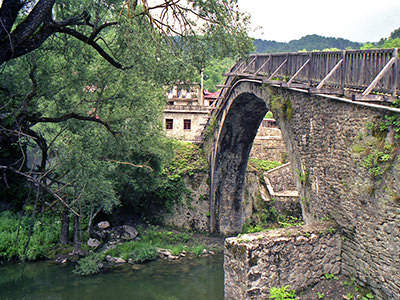
On the map of Zagori villages, Vovousa is the easternmost, practically at the border with West Macedonia.
Relying on wood exploitation, Vovousa shares dense forests with the endangered brown bears, which sometimes curiously show up.
The village got its name after the wild roar of the Aoos River. They crossed it with a beautiful single-arched stone bridge.
Local feast
26 July – Agia Paraskevi
Recommended places to stay
$$ – Kerasies Guesthouse
There are no budget and luxury accommodations available in Vovousa. Consider staying in other Zagori villages for more options.
Learn more about Zagori's stone bridges, paths, pools, and forests!
Zagorochoria villages, where time takes a timeout – Conclusion
Built like eagle nests on the slopes, entwined with green landscapes via paved dry-strone cobbled pathways and stone staircases, Zagorochoria villages are the ultimate escape plan from the crowded historical monuments of Athens or the sunburned masses on the beaches of coastal Greece.
Zagori villages have been practically untouched by time
With just four people per square kilometer, Zagori is more likely to host a bear’s tea party than a bustling crowd. It’s an open invitation to everyone who adores rugged mountains, wild gorges, murmuring rivers, and dense forests that make city parks look like mere potted plants.
Among these jaw-dropping vistas, the 46 stone villages of Zagori have been practically untouched by time. Each attractive with its authentic charm and character, they became temporary homes for hiking enthusiasts, history buffs, or just about anyone seeking a peaceful retreat.
From well-preserved stone mansions to monasteries perched on cliff edges, every corner of Zagorochoria has a story to tell. These hidden villages of Greece, off the well-trodden paths and itineraries, are where time seems to hold its breath. It would likely take yours away too.
Did you like this overview of Zagorochoria, Zagori villages?
Pin the article for later!
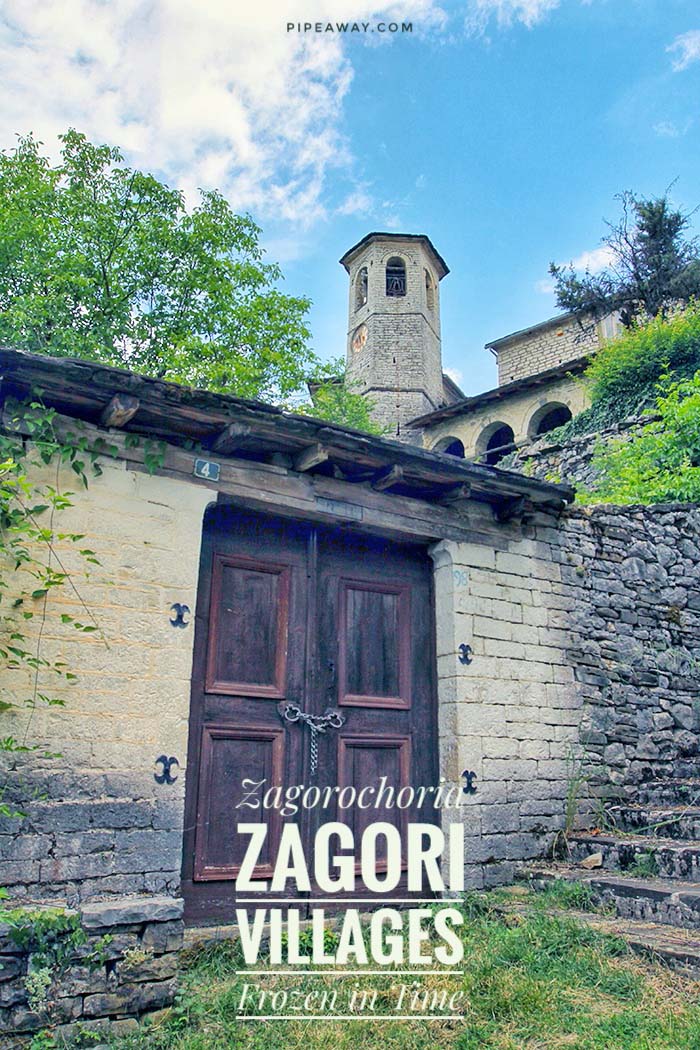
Disclosure: This post may contain affiliate links, meaning if you click on them and make a purchase, Pipeaway may make a small commission, at no additional cost to you. Thank you for supporting our work! The photographs in this article have been sourced through Flickr, Wikimedia Commons, Unsplash, and directly from authors. In the order of appearance, their authors are as follows: House roof in Kipoi (cover image) - Ivan Kralj Mikro Papigo - orientalizing, licensed under CC BY-NC-ND 2.0 Monodendri - Μanu, licensed under CC BY 2.0 Ano Pedina - Ziegler175, licensed under CC BY-SA 3.0 Elafotopos, Kapesovo, Vradeto, Tsepelovo, Vovousa - dkilim, licensed under CC BY-NC-SA 2.0 Vikos - massonth is licensed under CC BY-NC-SA 2.0 Kipoi - Bob Jansen, Unsplash Dilofo - Billllakos, licensed under CC BY-SA 4.0 Woman of Zagori, Aspraggeli - LittleRoamingChief, licensed under CC BY 2.0 Tristeno - Tasos Siam Door and tower in Kipoi village (pin image) - Ivan Kralj

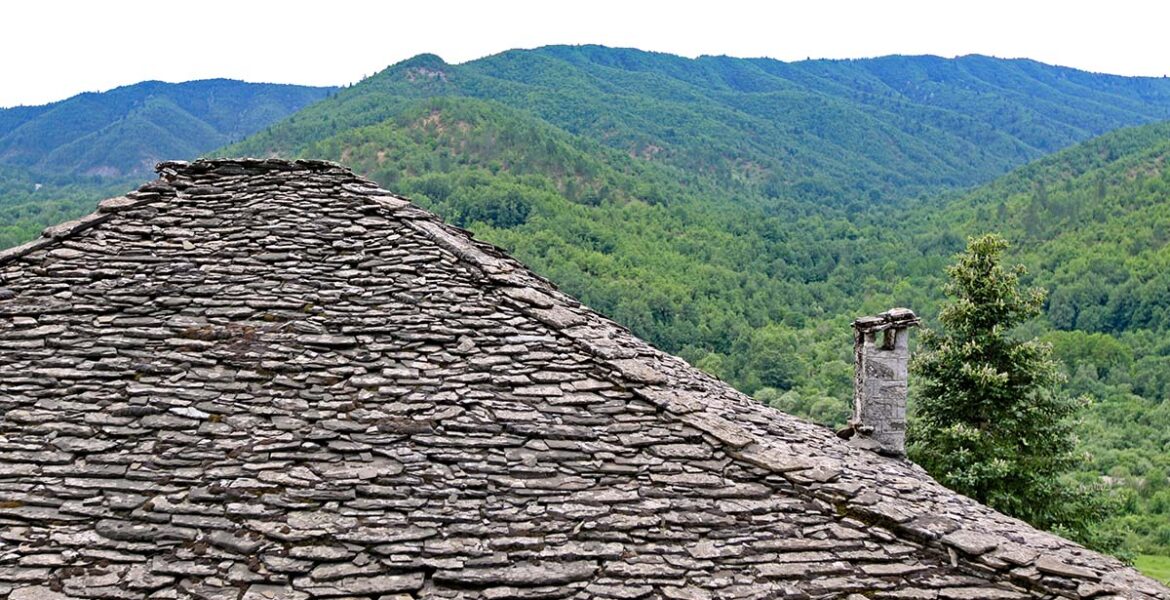

I spent 16-18 days in Greece touring the islands all the way up to Thessaloniki but missed these and I’m not sure how! But you did say they were hidden so clearly I didn’t get off the beaten path as well as I thought I did (although we did in most areas). Super cool place, so next time!
Heather, it sounds like you had an incredible adventure exploring Greece!
Each trip reveals new hidden gems, and I’m sure you found many great sights on eastern side of Greece.
Zagorochoria is tucked-away in the north-west of the country, so it would take some detour from what you described as your itinerary.
But hey, that just means you’ve got another reason to plan your next Greek getaway!
Until then, your memories of Greece’s islands and Thessaloniki will surely keep you dreaming of your next adventure!
Thank you for the break down. Such a challenge to pick the village to stay in. We plan on three nights to hike after we spend three nights in Meteora. Thinking that maybe Monodendri would be best? We hiked the schist villages in Portugal last year and loved that area- based in Candal. We like smaller villages. We are looking forward to hiking trails, finding caves, seeing some monasteries and taking in all the views.
Libby, you’re in for an incredible experience in Zagorochoria!
Monodendri sounds like a perfect choice for your hiking adventure, especially as you enjoyed your village experience in Portugal.
With its proximity to the Vikos Gorge and the 600-year-old Monastery of Agia Paraskevi, you’ll have plenty of opportunities to explore hiking trails, and immerse yourself in the breathtaking views.
Plus, Monodendri has a very tranquil atmosphere, it should be the perfect backdrop for your adventure in Zagori!